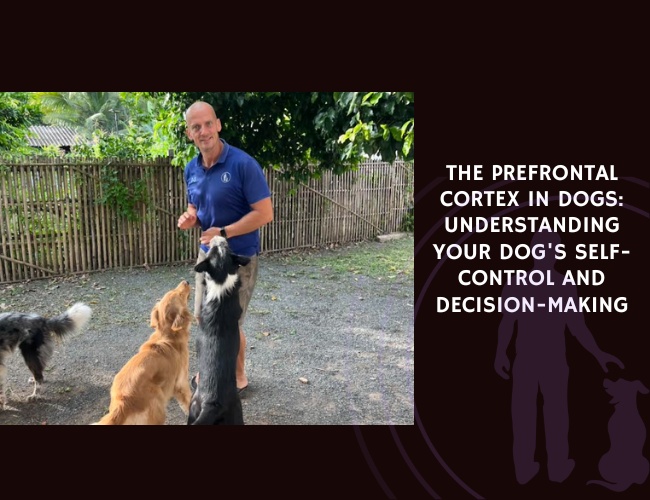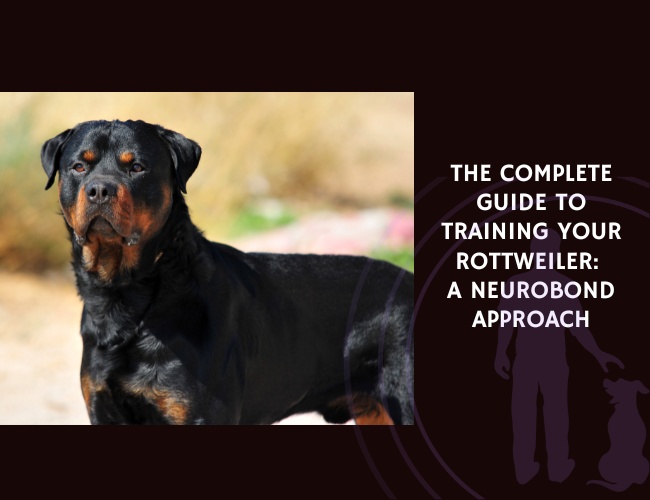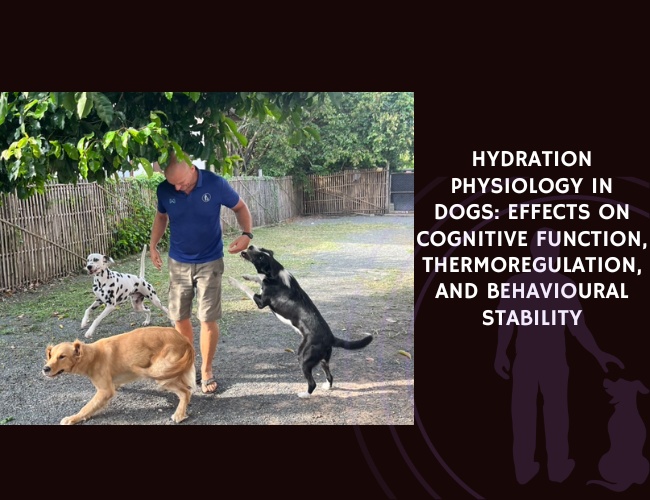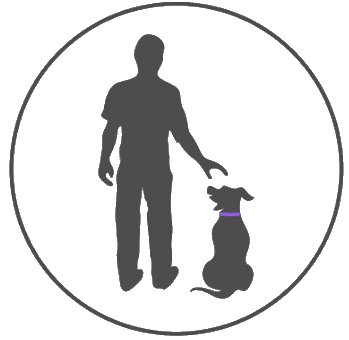Understanding Canine Obesity
Current Prevalence Rates Showing 30-40% of Dogs Are Affected
Recent studies have revealed a concerning trend: approximately 30-40% of dogs around the world are affected by obesity. This widespread issue has become a significant challenge for pet owners and veterinarians alike, highlighting the need for greater awareness and proactive management of canine health and nutrition.
Definition and Recognition of Obesity in Dogs
Obesity in dogs is characterized by excessive body fat that negatively impacts their health. Veterinarians generally define a dog as obese if it weighs 20% or more above its ideal body weight. Recognizing obesity in dogs is essential for initiating timely interventions. Key indicators include:
- Difficulty feeling ribs under a layer of fat
- Loss of a distinct waistline
- Abdomen sagging or drooping
- Reduced mobility and reluctance to exercise
Body Condition Scoring (BCS) systems, commonly used by veterinarians, provide a standardized method for assessing a dog’s body fat and identifying obesity.
Impact of Obesity on Overall Canine Health and Lifespan
The repercussions of obesity extend far beyond mere aesthetics. Excess weight can significantly impair a dog’s quality of life and reduce its lifespan. Below are some specific impacts:
- Orthopedic Problems: Carrying extra weight places increased pressure on joints, leading to arthritis, hip dysplasia, and other orthopedic issues. This is particularly detrimental to older dogs, who naturally experience joint degeneration.
- Respiratory Issues: Obesity can exacerbate respiratory conditions such as tracheal collapse and brachycephalic obstructive airway syndrome (BOAS), making it difficult for dogs to breathe, especially during physical activity.
- Cardiovascular Strain: The additional fat increases the workload on the heart, which can lead to cardiovascular diseases and hypertension.
- Diabetes: Obese dogs are at higher risk of developing insulin resistance, potentially leading to diabetes mellitus.
- Reduced Lifespan: Various studies indicate that obesity can shorten a dog’s life by up to 2.5 years, significantly affecting their overall well-being and vitality.
Awareness and early recognition of these issues can help pet owners and veterinarians work together to manage and mitigate the risks associated with canine obesity. Addressing these concerns proactively ensures that dogs can enjoy a healthier, more active life.
As we delve deeper into understanding and managing canine obesity, it is crucial to explore the root causes that contribute to this growing problem. Identifying these factors enables us to implement effective strategies to combat and prevent obesity in our furry companions.
Common Causes of Dog Obesity
Overfeeding and Inappropriate Dietary Choices
One of the leading causes of obesity in dogs is overfeeding. Pet owners often struggle with portion control and may inadvertently offer too much food. Even if the primary meal is balanced, excessive treats and table scraps contribute to an imbalanced diet and excessive caloric intake. Dogs often consume more calories than necessary when allowed free feeding or provided with multiple meals and treats throughout the day.
Many commercial dog treats are high in calories, fats, and sugars, leading to unintended weight gain. Additionally, offering dogs human food as treats can be particularly problematic. Foods like cheese, meats, and baked goods meant for humans are typically high in calories and not nutritionally balanced for dogs. This practice can quickly contribute to added pounds and disrupt the careful balance of a dog’s diet.
Lack of Regular Exercise and Sedentary Lifestyle
Regular physical activity is essential for maintaining a healthy weight. However, many dogs do not receive adequate exercise, especially those living in urban environments or homes without easy access to outdoor spaces. A sedentary lifestyle, often compounded by long hours alone due to their owners’ work schedules, exacerbates the risk of obesity.
Exercise is vital not only for weight control but also for overall health. It aids in maintaining muscle mass, promotes cardiovascular health, and provides mental stimulation. Dogs that lack regular exercise are likely to gain weight due to decreased energy expenditure, making weight management challenging. Establishing a routine that includes daily walks, play sessions, and engaging activities can significantly prevent and combat obesity in dogs.
Genetic Factors and Breed Predispositions
Genetics also play a significant role in a dog’s propensity to gain weight. Some breeds are more predisposed to obesity due to inherited metabolic tendencies or specific physical characteristics that make it harder to maintain a lean body. For example, breeds like Labrador Retrievers, Beagles, Dachshunds, and Cocker Spaniels are known to have higher tendencies for weight gain.
Understanding a dog’s genetic background can help owners anticipate and manage potential weight issues. Genetic factors can influence not only how easily a dog gains weight but also how challenging it can be to lose it. Nevertheless, regardless of breed, all dogs benefit from a controlled diet and routine exercise to help mitigate the risks posed by genetic predispositions.
It is crucial for pet owners to understand that obesity in dogs is typically a result of multiple contributing factors, often a combination of overfeeding, lack of exercise, and genetics. Recognizing these causes and taking a proactive approach to diet and activity can significantly enhance a dog’s health and quality of life. With careful management, owners can help their dogs maintain a healthier weight, thereby reducing the risk of serious health issues.
Next, it is essential to understand the health risks and complications associated with obesity in dogs and how addressing these risks can improve their overall wellbeing.
Health Risks and Complications
Obesity in dogs is a serious health concern that can lead to numerous complications, significantly affecting a dog’s quality of life and longevity. Understanding these risks is crucial for any pet owner aiming to manage and prevent obesity in their dogs effectively.
Orthopedic Problems and Joint Stress
One of the most common health issues seen in obese dogs is orthopedic problems. Excess weight places additional stress on a dog’s joints, which can lead to conditions such as osteoarthritis. The cartilage in the joints wears down more quickly under the strain of extra body weight, leading to chronic pain and inflammation.
Obese dogs are also at a higher risk for conditions like hip dysplasia and cruciate ligament tears, which can exacerbate mobility issues. These conditions not only cause pain but can also significantly hinder a dog’s ability to move. For dogs with pre-existing joint problems, obesity can make these conditions worse, shortening their overall lifespan and diminishing their quality of life.
Respiratory Issues and Breathing Difficulties
Another significant complication of canine obesity is respiratory problems. Excess fat can accumulate in the chest and around the airway, leading the dog to struggle with breathing. This condition, known as respiratory compromise, manifests as shortness of breath during activities that were previously manageable. You may notice that your dog pants excessively, even after minimal exertion, or struggles to catch their breath.
For breeds prone to respiratory issues, such as Bulldogs and Pugs, obesity can significantly worsen these problems. The added weight restricts the airflow further, making these dogs susceptible to conditions such as brachycephalic obstructive airway syndrome (BOAS). In severe cases, obesity can lead to life-threatening complications like respiratory distress.
Increased Cancer Risk and Reduced Life Expectancy
Obesity has also been linked to an increased risk of various types of cancers in dogs. Studies have shown that overweight dogs are more susceptible to developing certain types of cancer, including mammary tumors, bladder cancer, and lymphoma. The mechanisms behind this increased risk are not fully understood but are believed to be related to chronic inflammation caused by excess fat and the altered hormonal environment in obese animals.
Furthermore, obese dogs generally have a reduced life expectancy. Research indicates that carrying excess weight can reduce a dog’s lifespan by as much as 2.5 years. This reduction in lifespan is due to the array of health complications that come with obesity, including heart disease, diabetes, and the aforementioned orthopedic and respiratory issues. While maintaining a healthy weight does not guarantee a dog will avoid these problems entirely, it significantly mitigates the risks and can lead to a longer, healthier life.
Addressing dog obesity requires a multifaceted approach, combining dietary management strategies with regular exercise and ongoing monitoring. By understanding and mitigating the health risks associated with obesity, you can significantly improve your dog’s quality of life and overall health.
Dietary Management Strategies
Achieving and maintaining an optimal weight for your dog is pivotal to its long-term well-being. Proper dietary management strategies can help prevent and manage obesity, significantly enhancing your dog’s health and lifespan. This chapter delves into essential dietary approaches: portion control, selecting high-quality dog food, and establishing consistent feeding schedules.
Proper Portion Control and Measuring Food Amounts
A fundamental aspect of effective dietary management is portion control. Overfeeding, even with nutritious food, can lead to weight gain. Therefore, understanding and strictly adhering to correct portion sizes is necessary.
Portion Control Tips
- Use Measuring Tools: Employ a standard measuring cup or a kitchen scale to measure your dog’s food. This precision ensures consistent portion sizes and helps avoid accidental overfeeding.
- Follow Feeding Guidelines: Refer to the feeding recommendations on your dog’s food package, adjusting for factors like age, size, activity level, and specific health needs. Consult your veterinarian for personalized advice if needed.
- Avoid Free-Feeding: Resist the temptation to leave food out all day (free-feeding). This practice can lead to overeating and weight gain. Instead, provide measured meals at set times.
Selecting Appropriate High-Quality Dog Food
The quality of the food you offer plays a crucial role in managing your dog’s weight. High-quality dog food that is nutritionally balanced supports overall health and helps prevent obesity.
Choosing the Right Dog Food
- Read the Ingredients: Opt for dog foods with whole, recognizable ingredients such as real meat, vegetables, and grains. Avoid foods with excessive fillers, artificial preservatives, and by-products.
- Balanced Nutrients: Ensure the food meets the nutritional standards set by the Association of American Feed Control Officials (AAFCO). This information is typically indicated on the packaging.
- Specialized Formulas: If your dog is already obese or has specific health conditions, look for specialized formulas designed for weight management. These foods often have fewer calories and more fiber to help your dog feel full longer.
Establishing Consistent Feeding Schedules
Consistency in feeding times promotes regular eating habits, aids in portion control, and helps prevent overeating, which is often the result of irregular feeding times.
Tips for Consistent Feeding
- Set Regular Meal Times: Feed your dog at the same times each day, typically two to three times daily. Regular schedules help regulate metabolism.
- Avoid Feeding from the Table: Discourage feeding your dog table scraps and limit treats to specific times. This habit prevents additional calorie intake that can lead to weight gain.
- Monitor Snack Intake: Include treats and snacks as part of the total daily calorie allowance. Opt for healthy, low-calorie treats and ensure they do not exceed 10% of your dog’s daily calorie intake.
Effective dietary management involves careful portion control, selecting high-quality foods, and maintaining consistent feeding schedules. These strategies contribute significantly to preventing and managing obesity in dogs, ensuring they live healthier, longer lives.
Next, we will explore how incorporating regular exercise routines enhances these dietary efforts, providing a comprehensive approach to managing your dog’s weight.
Exercise and Activity Planning
One of the critical aspects of managing dog obesity is ensuring regular physical activity. Incorporating consistent exercise routines not only helps your dog to lose weight but also improves their overall health and well-being. This chapter provides detailed guidance on implementing daily exercise routines, selecting age and breed-appropriate activities, and gradually increasing exercise intensity.
Implementing Daily Exercise Routines
To promote weight loss and maintain a healthy lifestyle, dogs should engage in at least 30 minutes of exercise daily. This exercise can be broken into multiple sessions throughout the day to match your schedule better and make it more manageable for your pet. Regular exercise routines should include:
- Walks: Daily walks are an excellent way for dogs to get their needed exercise. Aim to walk your dog at a brisk pace for at least 30 minutes.
- Playtime: Incorporate activities such as fetch, tug-of-war, and other interactive games that encourage movement.
- Dog sports: If possible, consider enrolling your dog in sports like agility, flyball, or obedience classes, which provide a structured environment for physical exertion.
Age and Breed-Appropriate Activity Options
When planning an exercise routine, it’s vital to consider your dog’s age, breed, and overall health status. Different dogs have varying exercise needs and capabilities.
Puppies
Puppies have abundant energy but should engage in low-impact activities to protect their developing joints. Short walks, gentle play, and brief training sessions are ideal for puppies.
Adult Dogs
Adult dogs typically have higher energy levels and can handle more strenuous activities. For breeds with high endurance, such as Border Collies and Labradors, activities like running, hiking, and agility training are suitable. Medium-energy breeds benefit from regular walks, fetch, and interactive playtime.
Senior Dogs
Senior dogs may have decreased energy levels and joint issues, requiring gentler exercise routines. Short, leisurely walks, swimming, and mild play activities are beneficial for maintaining mobility without overexertion. Always consult with a veterinarian before starting or modifying exercise routines for senior dogs.
Gradual Increase in Exercise Intensity
It is essential to introduce exercise gradually, especially for dogs that are not used to regular activity or are significantly overweight:
- Start Slow: Begin with low-intensity activities, such as short walks or brief play sessions.
- Monitor Response: Pay close attention to your dog’s response to exercise. Look for signs of fatigue, overheating, or discomfort, and adjust the activity level accordingly.
- Increase Duration: Gradually increase the duration of exercise as your dog builds endurance. For instance, extend walks by a few minutes each week.
- Vary Activities: Introduce a variety of exercises to keep your dog engaged and target different muscle groups. Variety also helps prevent boredom and enhances overall fitness.
- Consult a Veterinarian: Always seek veterinary guidance to ensure exercise plans are safe and appropriate for your dog’s health and weight loss goals.
By effectively implementing exercise and activity plans tailored to your dog’s needs, you pave the way for a healthier, more active lifestyle. Consistent physical activity, coupled with a balanced diet, provides a comprehensive approach to combating obesity in dogs, enhancing their quality of life and longevity.

Regular monitoring, adjusting plans according to progress, and maintaining these healthy habits will contribute to long-term success in managing your dog’s weight.
Monitoring and Maintenance
Regular Weight Checks and Progress Tracking
Effective monitoring and maintenance are key to ensuring long-term success in managing your dog’s weight. Regular weight checks should be part of your routine. By measuring your dog’s weight consistently, you can track progress and make timely adjustments to their diet and exercise regimen. Aim for a weight check every two to four weeks to observe noticeable trends.
For accurate weight tracking:
- Use the same scale for each measurement to ensure consistency.
- Weigh your dog at the same time of day, preferably before a meal.
- Record the weight in a logbook or an app to track changes over time.
In addition to weight, you can also monitor your dog’s Body Condition Score (BCS). The BCS is a visual and physical assessment of a dog’s body fat and muscle mass. Assessing the BCS involves feeling the ribs, observing the waist tuck, and noting the abdomen’s shape. Regular BCS evaluations alongside weight checks can provide a more comprehensive understanding of your dog’s body condition.
Adjusting Diet and Exercise Plans as Needed
As your dog progresses on their weight management journey, it’s important to adjust their diet and exercise plans to meet their changing needs. If weight loss stalls or if your dog reaches their target weight, modifications may be necessary.
Dietary Adjustments:
- Portion Sizes: Reassess daily food portions. Adjusting caloric intake may be required if weight loss plateaus.
- Food Quality: Ensure the dog food remains high-quality and balanced. Ingredient changes in dog food products might necessitate dietary adjustments.
- Treats and Snacks: Adjust the frequency and type of treats. Opt for healthy options and count them as part of your dog’s total caloric intake.
Exercise Modifications:
- Activity Levels: Based on your dog’s response and energy levels, increase or decrease the intensity and duration of physical activities.
- Variety: Introduce new exercises to keep your dog engaged and stimulated. Activities like swimming, fetch, or agility courses can provide both physical and mental enrichment.
- Frequency: If weight loss has hit a plateau, increase the frequency of exercise sessions throughout the day.
Maintaining Long-Term Weight Management Success
Long-term weight management requires a commitment to ongoing monitoring, consistent routines, and adjustments as needed. Consistency in following a structured plan helps reinforce healthy habits for both the dog and the owner.
Key Strategies for Long-term Success:
- Routine Visits to the Vet: Regular vet check-ups can provide professional guidance and support. Your vet can help assess your dog’s progress and offer recommendations for maintaining a healthy weight.
- Stay Informed: Keep yourself updated on best practices for canine health and nutrition. Joining dog owner groups or forums can be beneficial.
- Behavioral Considerations: Be mindful of behavioral changes that might indicate your dog’s needs are changing. Increased lethargy, irritability, or changes in appetite can signal the need for a plan reassessment.
- Positive Reinforcement: Reinforce good behaviors with praise and attention rather than food rewards. This helps in maintaining discipline in diet and exercise routines.
Successfully managing your dog’s weight is an ongoing process that requires vigilance and adaptability. By incorporating regular check-ins, making necessary adjustments, and committing to a long-term plan, you set your dog up for a healthier and more fulfilling life.
Overall, continuous monitoring and adjusting your dog’s weight management strategy keeps their health on track. Ensuring they remain at an ideal weight with balanced diet and proper exercise, contributes significantly to their longevity and quality of life.










